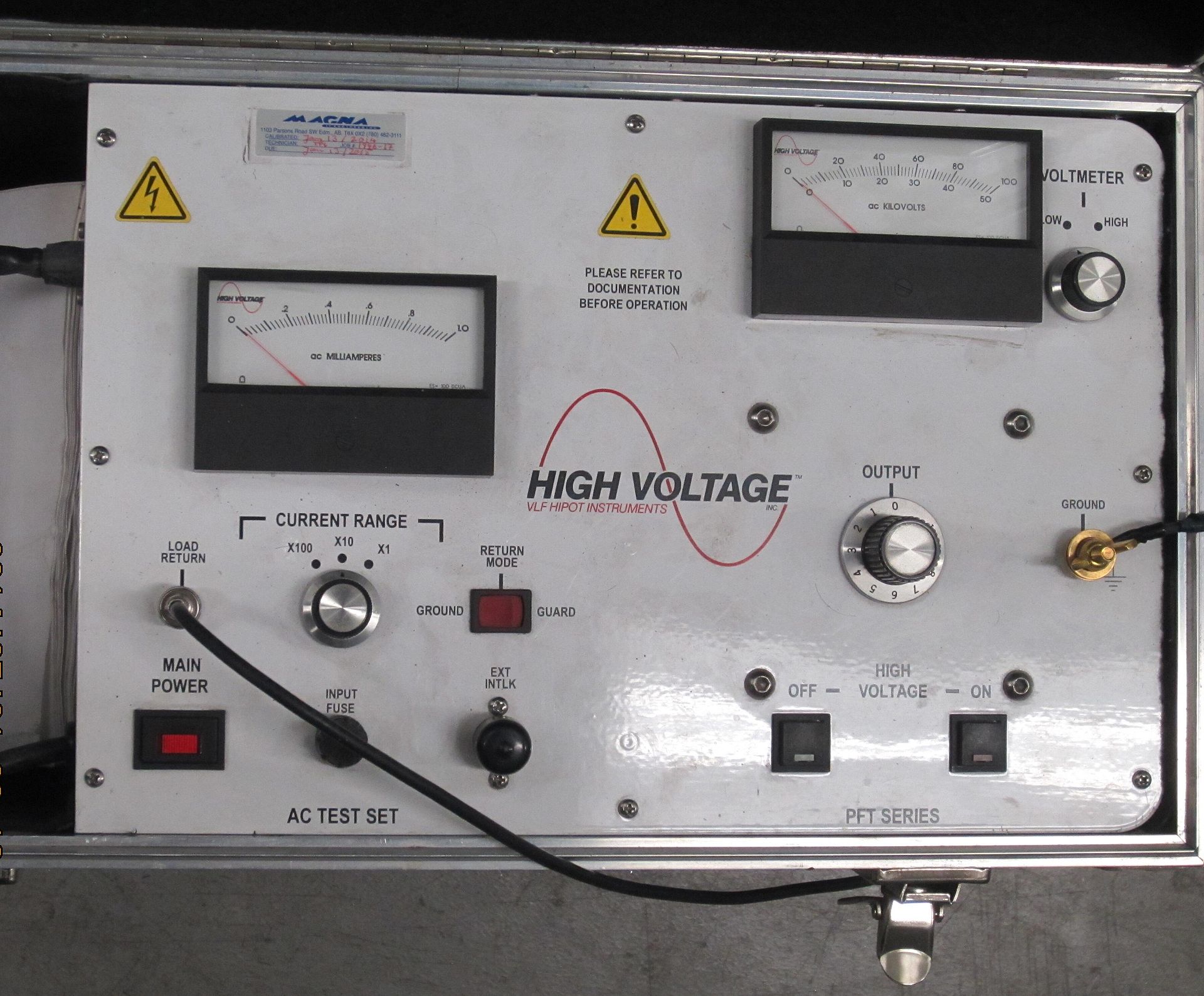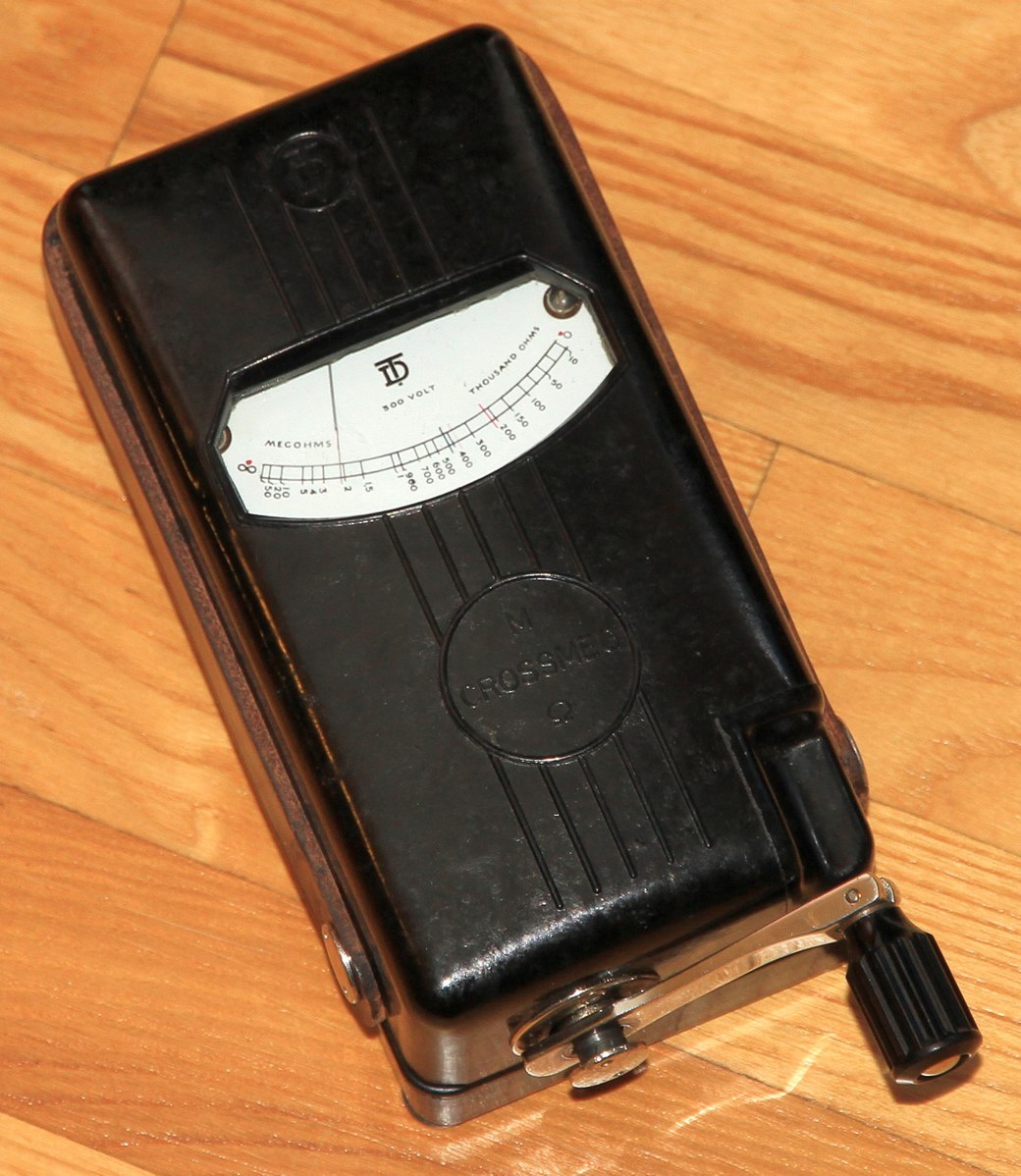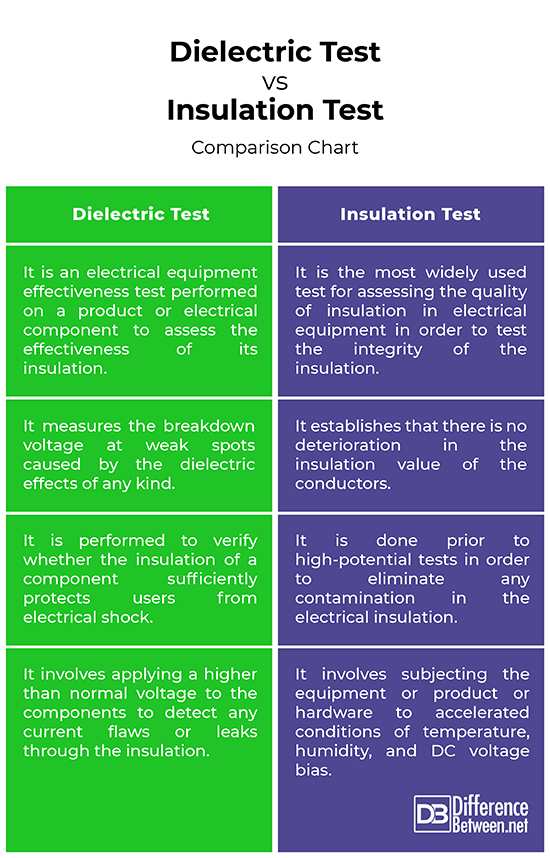Difference Between Dielectric Test and Insulation Test
Like every other material or structure, electrical equipment and components also get deteriorated with time due to material aging, changing environmental conditions, continuous use, or a combination of these factors. This can cause a variety of other problems such as component failures and malfunctions. Other factors such as dust accumulation, rusting enclosures, and condensation also contribute to the deterioration of electrical equipment. On top of it, circuit alteration or load changes may be made without overall design consideration, which further results in poor selection of equipment. This is why periodic electrical testing is required to detect such failures in the system, particularly deterioration of electrical equipment.
That being said, a dielectric withstand test, or commonly referred to as ‘hi-pot test’, determines the breakdown voltage at weak spots and verifies whether the insulation of a component sufficiently protects users from electrical shock. The dielectric test typically involves applying a higher than normal voltage to the components to detect any current flaws or leaks through the insulation. Then there’s insulation resistance test, or just simply insulation test, which measures the resistance of the insulation. The insulation test is done prior to high-potential tests in order to eliminate any contamination in the electrical insulation. While both the tests have the same basic objectives, they are fairly different.

What is Dielectric Test?
Dielectric withstand test or dielectric test or hi-pot test, whatever you call it, is performed to verify the major insulation in transformers. It ensures that the insulation between windings and the insulation of windings to ground can sufficiently withstand the required power-frequency voltages. Skilled technicians typically apply a higher than usual voltage the equipment’s current-carrying conductors and its metallic shielding to detect any current that flow or leaks through the insulation. If the insulation remains intact under the impact of high test voltage, then the equipment is considered safe for the user under normal operating conditions. It usually measures the breakdown voltage at weak spots caused by the dielectric effects of any kind.

What is Insulation Test?
Insulation Resistance Test, or simply referred to as Insulation Test, is the standard test assessing the quality of insulation in wires, cables and electrical equipment. It is performed to verify that insulation of conductors, electrical accessories and equipment is satisfactory and that electrical conductors do not show a low insulation resistance. The test is conducted at or above rated voltage to determine if there are low resistance paths to ground or between winding to winding due to any signs of deterioration in winding insulation. The test is performed to establish that there is no deterioration in the insulation value of the conductors. It is often conducted to assess the leakage integrity between interconnections that are supposed to be electrically isolated.
Difference between Dielectric Test and Insulation Test
Test
– A dielectric withstand test, also referred to as hi-pot test, is an electrical equipment effectiveness test performed on a product or electrical component to assess the effectiveness of its insulation. It is the most common type of electrical safety test to measure leakage current and an integral part of product safety evaluation providing manufacturers with appropriate information regarding the chosen insulation system. An insulation resistance test, on the other hand, is the most widely used test for assessing the quality of insulation in electrical equipment in order to test the integrity of the insulation.
Purpose
– The purpose of dielectric test is to determine the breakdown voltage at weak spots caused by the dielectric effects of any kind. It is the test to check compliance with the electrical safety testing standards and which verifies whether the insulation of a component sufficiently protects users from electrical shock. The purpose of insulation test is to determine if there are low resistance paths to ground or between winding to winding as a result of deterioration of winding insulation. Insulation test is done prior to high-potential tests in order to eliminate any contamination in the electrical insulation.
Process
– The dielectric test typically involves applying a higher than normal voltage to the equipment’s current-carrying conductors and its metallic shielding to detect any current that flow or leaks through the insulation. If the insulation remains intact under the impact of high test voltage, then the equipment is considered safe for the user under normal operating conditions. The insulation test involves subjecting the equipment or product or hardware to accelerated conditions of temperature, humidity, and DC voltage bias to force moisture-induced corrosion and electro-migration failures within a short time. The test should be performed before and after repair or when maintenance is performed.
Dielectric Test vs. Insulation Test: Comparison Chart

Summary of Dielectric Test vs. Insulation Test
Although, both dielectric test and insulation test are quite similar in that they share similar objectives, the dielectric test usually measures the breakdown voltage at weak spots caused by the dielectric effects of any kind whereas the insulation test assesses the quality of insulation. Plus, insulation test is done prior to high-potential tests in order to eliminate any contamination in the electrical insulation. Dielectric test, on the other hand, verifies whether the insulation of a component sufficiently protects users from electrical shock.
- Difference Between Caucus and Primary - June 18, 2024
- Difference Between PPO and POS - May 30, 2024
- Difference Between RFID and NFC - May 28, 2024
Search DifferenceBetween.net :
Leave a Response
References :
[0]Image credit: https://commons.wikimedia.org/wiki/File:Dana-Tekno_Crossmeg,_vintage_insulation_tester.jpg
[1]Image credit: https://en.wikipedia.org/wiki/Dielectric_withstand_test#/media/File:High_voltage_test_set.jpg
[2]Harlow, James H. Electric Power Transformer Engineering. Boca Raton, Florida: CRC Press, 2007. Print
[3]Gill, Paul. Electrical Power Equipment Maintenance and Testing. Boca Raton, Florida: CRC Press, 2016. Print
[4]Ushakov, V.Y., et al. Insulation of High-Voltage Equipment. Berlin, Germany: Springer Science & Business Media, 2004. Print
[5]Singh, P. and Puligandla Viswanadham. Failure Modes and Mechanisms in Electronic Packages. Berlin, Germany: Springer Science & Business Media, 1997. Print
[6]Acton, Q. Ashton. Light Metals—Advances in Research and Application. Atlanta, Georgia: ScholarlyEditions, 2013. Print
